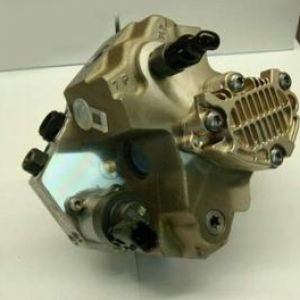All that you need to know about turbochargersPosted by Diesel Injection on December 8th, 2021 Turbochargers, which were originally only seen in race cars, are now becoming increasingly popular throughout civilian vehicles due to their energy efficiency and efficient horsepower boost. In this essay, I\'ll explain what a turbocharger is, how it operates, and what advantages you may gain from one. There are three pieces to a turbocharger: the turbine, compressor, as well as cartridge. The turbine side consists of a turbine wheel as well as a turbine enclosure, whereas the compressor side consists of a compressor wheel as well as compressor housing. The cartridge seems to be the component that joins the compressor and turbine sides. The turbocharger is attached to the engine\'s exhaust pipe. As a result, exhaust from specifically the engine enters through the turbine intake, spinning the turbine, as well as the compressor wheel rotates as well, thanks to the shaft attached to the compressor. Holset Turbochargers Orlando are used widely. As a result, the ambient air is compressed and the completed product is pumped to the cylinders. The more exhaust which passes through the blades, the quicker they spin, the more horsepower the engine generates. A four-cylinder car\'s turbocharger may often achieve speeds of over 150,000 rpm, necessitating careful support of specifically the turbine shaft. At these speeds, most of the bearings would burst; hence most turbochargers employ a fluid bearing. Fuel injectors service Orlando is found at reasonable prices. The shaft is supported by a thinner layer of oil which is continually poured around the shaft in specifically this type of bearing. This accomplishes two goals: it actually cools down the shaft and several other turbocharger components, and it enables the shaft to actually spin freely. Whenever you step on the throttle, though, the turbocharger is unable to produce a quick power increase, which we refer to as \"lag.\" This is due to the fact that the turbine requires a second to get up to full speed before producing boost. Making the turbo smaller is perhaps the most reliable technique to minimize its weight. The tiny turbocharger, on the other hand, may give an immediate power increase at lesser engine speeds, but it may destroy the turbo at much higher speeds, since a huge amount of air will undoubtedly force the blades for spinning extremely fast, causing the temperature to rise too quickly. As a result, many individuals choose for 2 turbochargers of varying sizes. Whenever the engine speed is low, the little turbo spins fast to prevent lag; when the particular engine speed increases, the larger turbo takes over to generate additional boost. At high elevations, when the air is less thick, a turbocharger\'s air compression feature enables more air for burning, resulting in more power. Like it? Share it!More by this author |


